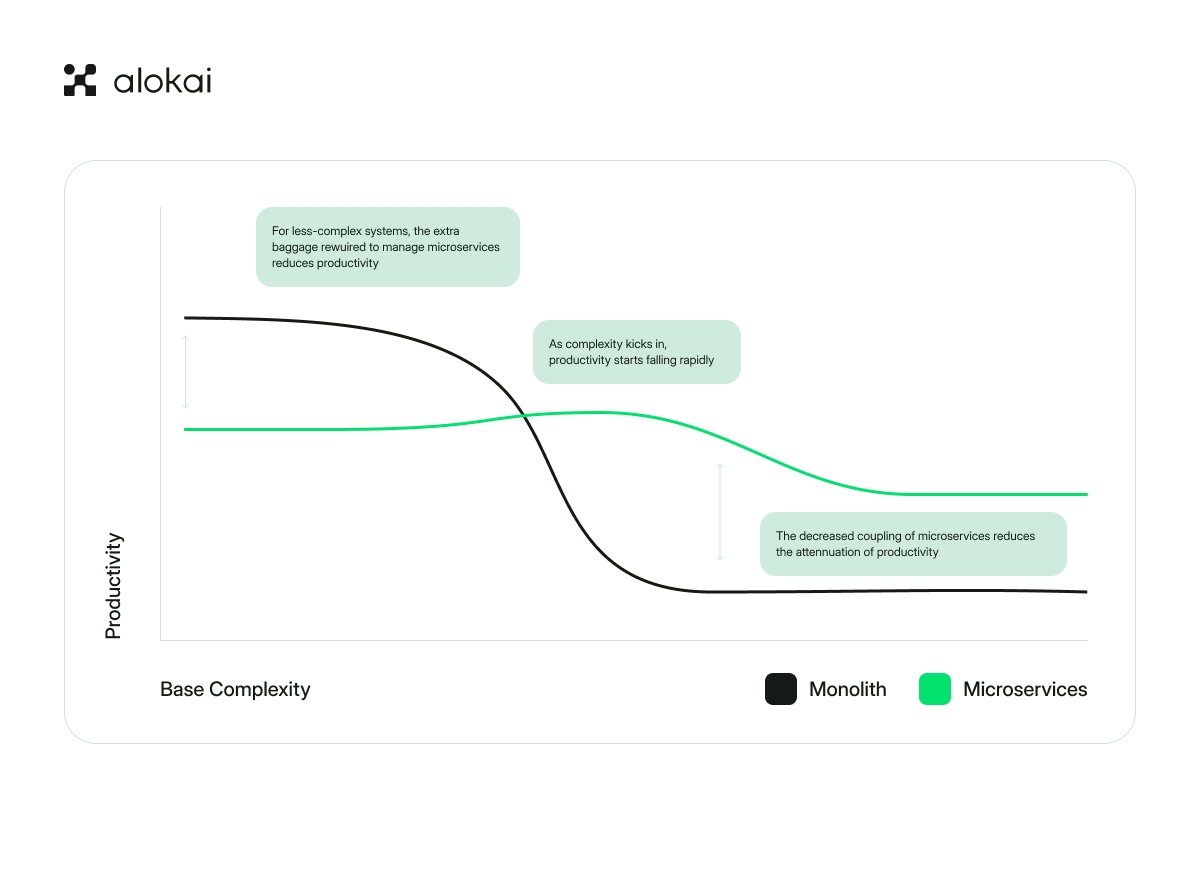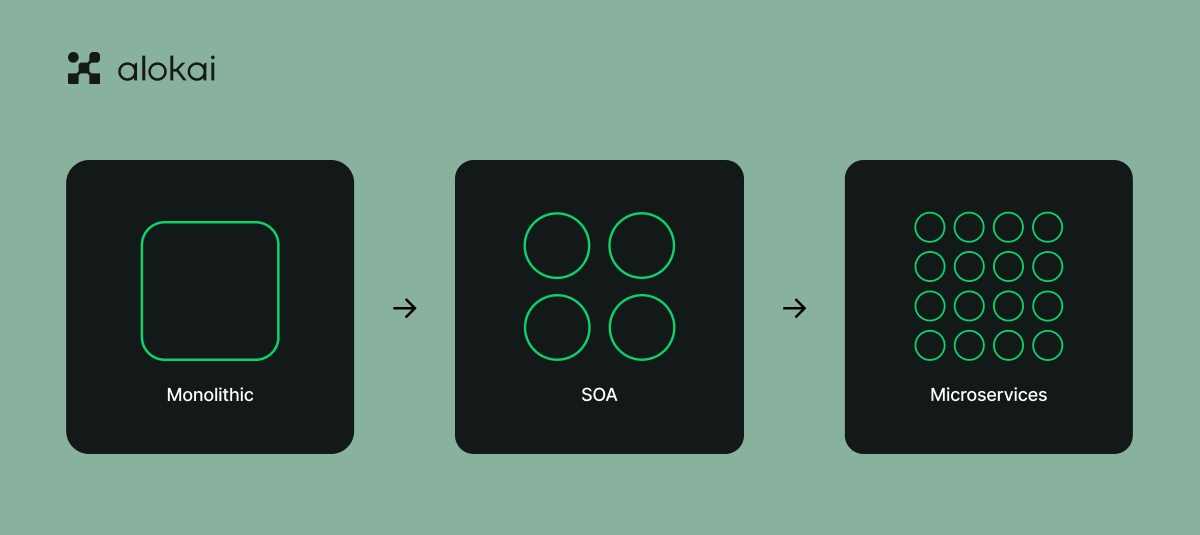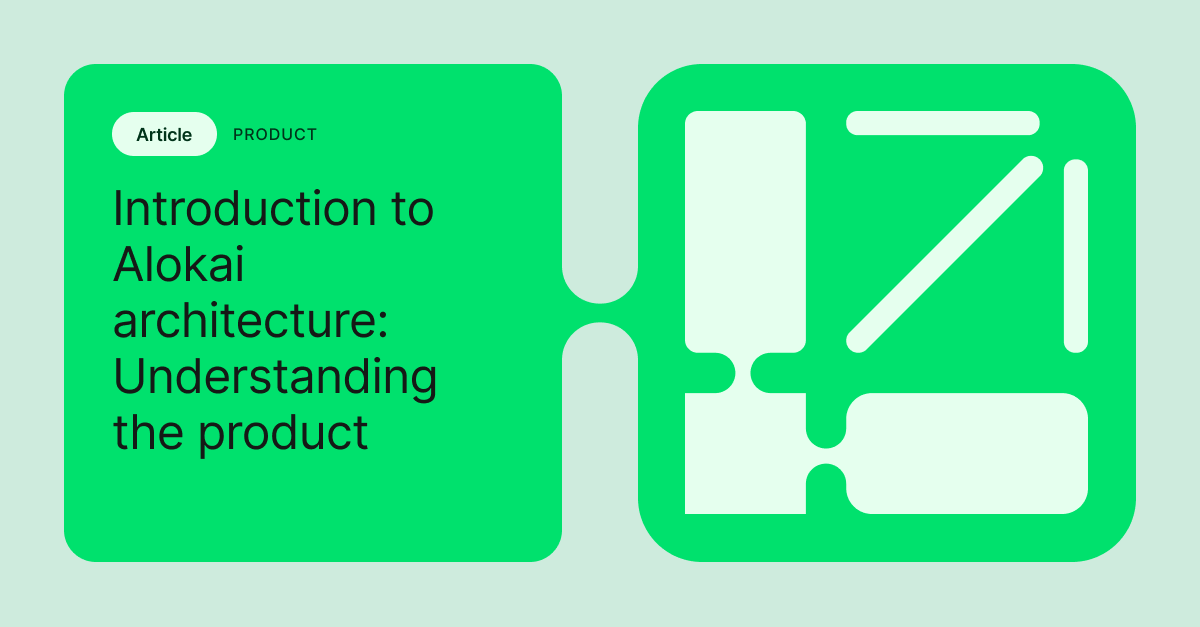Monolith architecture integrates all aspects of a software application into one framework. Ideal for specific scenarios, it presents unique challenges in scaling and maintenance. This article will navigate you through its key concepts, advantages, and when to consider it for your project.
Key takeaways
- Monolithic architecture represents a unified model where software components work within a single platform. The tightly interwoven components make it simple yet challenging to scale.
- A monolith’s tightly coupled nature complicates scaling individual parts and can hinder adapting to changing business needs, requiring thoughtful planning and strategy for maintenance and updates.
- Despite the shift towards microservices, monolithic applications remain significant for their simplicity and cost-effectiveness. They can coexist with microservices in a hybrid architectural approach.
Exploring the fundamentals of monolithic architecture

Monolithic architecture has long been the traditional model for software development. It embodies a unified model where all software components of an application interact within a single database. This cohesive model requires each component and its associated components to be present for the entire application to function.
In this cohesive system, data moves sequentially from one component to another, forming a tightly interwoven environment. This interconnectedness means that a change or failure in one component can significantly impact the other components. Despite the challenges this can pose, monolithic architecture's simplicity and comprehensibility make it a strong contender in software development.
What constitutes a monolithic application?
A monolithic application, also known as monolithic software, in software engineering is:
- a singular, self-contained unit that operates independently from other applications
- often built using a specific development framework
- resulting in a large, unified code base.
The architectural design of a monolithic application presents as a singular unit, housing all components and functions. These components, which include:
- data storage
- business logic
- client-side user interface
- server-side application
In a system where components are tightly integrated and administered as a single entity, using the same code base can pose challenges for continuous deployment due to the large, interconnected codebase. However, it also provides benefits such as simplicity and ease of administration.
Key characteristics of monolithic systems
Monolithic systems are celebrated for their straightforwardness, which stems from consolidating all components into one codebase. Compared to distributed systems, this makes them simpler to understand, manage, and oversee.
However, this simplicity comes with its own set of challenges. Monolithic systems' self-contained nature makes them difficult to scale. Since each component is tightly coupled with the others, scaling one component requires scaling the entire system, which can be time-consuming and resource-intensive.
Despite these challenges, monolithic systems still offer benefits, such as high performance, due to direct system calls enabling efficient communication and processing within the system.
The monolithic approach in software engineering
The monolithic approach in software engineering includes:
- The creation, launch, and upkeep of applications as a single, consolidated unit
- This approach may be beneficial for small projects due to its simplicity and rapid development pace
- However, the monolithic approach may pose challenges as the application grows in complexity.
The primary disadvantages of the monolithic approach include:
- Restricted scalability
- Heightened complexity as projects expand
- Diminished flexibility and organizational agility
- Potential obstacles to efficiency during scaling
This calls for carefully evaluating the project requirements and scale before deciding on the monolithic approach.
Development and deployment cycle
The application's size and complexity can greatly affect the creation and deployment processes in monolithic systems. Due to the difficulties in scaling individual components, the development pace can decrease, and the risk of errors impacting the entire application can increase.
Moreover, the deployment process in monolithic systems can be complex. The challenges include:
- The entire application needs to be built and deployed as a single entity, leading to slower initialization
- Lengthier deployment durations
- The need for greater resources compared to microservices architectures
These challenges highlight the need for a well-thought-out development and deployment strategy when working with monolithic systems.
Adapting to business requirements with a monolithic system
Monolithic systems can conform to business needs, though their flexibility comes with certain limitations. The tight coupling within the system makes it challenging to scale individual components or functionalities without affecting the entire system.
Furthermore, accommodating changing business requirements can be challenging due to the system's interconnectedness. However, strategies such as scalability and transitioning from a monolith to microservices can facilitate the adaptation of monolithic architectures to evolving business requirements.
Despite these challenges, monolithic systems can adapt and evolve with careful planning and strategy to meet changing business needs.
Scaling and maintenance challenges in monolithic architectures
The expansion and upkeep of a monolithic architecture present unique challenges. Scaling the entire application can result in inefficiencies, as resources must be increased for the entire system, even if only a specific component requires additional resources.
Furthermore, maintaining and updating a monolithic codebase can be time-consuming and prone to errors. Since any change in one component can affect the entire system, careful planning and testing are required before implementing any updates or changes.
Despite these challenges, monolithic architectures remain popular due to their simplicity and ease of deployment.
Scaling the entire application
The expansion of a monolithic application introduces substantial challenges. Due to the complexity and interconnectedness of the components, increasing compute resources for the entire system is often required, even if only a specific component needs scaling. This results in inefficiencies such as slower deployment, inefficient resource utilization, and costly vertical scaling.
However, scaling a monolithic application is not impossible. It can be achieved by:
- Incorporating read replicas
- Transitioning to a microservices-based architecture
- Decoupling functionality
- Implementing horizontal scaling through multiple instances of the application
Thus, while challenging, scaling a monolithic application is not insurmountable.
Updating and maintaining a monolithic code base
Updating and maintaining a monolithic codebase can be intricate and lengthy. Given the interconnected nature of the components, any change or update in one component can impact the entire application, increasing the risk of errors.
Furthermore, introducing new technologies or changes in the framework can significantly impact the entire system, making updates costly and time-consuming. Despite these challenges, maintaining and updating a monolithic codebase can be effectively managed with thorough planning and testing.
Transitioning from monolithic to microservices architecture

With software development progressing and adopting more intricate and scalable applications, numerous organizations are contemplating shifting from monolithic to microservices architecture. This transition involves assessing the need for the shift, planning a migration strategy, and managing the complexities of it.
However, the transition is not to be taken lightly. It involves a significant overhaul of the existing system and requires substantial planning and resources. Hence, weighing the pros and cons before deciding to make the shift is crucial.
Assessing when to make the shift
Determining the right time to shift to microservices architecture is a critical choice. It involves considering factors such as business goals, the complexity of the application, and the available resources. The impact of the application’s complexity on the transition is significant. Implementing individual services influences local complexity, while global complexity is determined by the interactions and dependencies among the services.
Additionally, to ensure a smooth transition, evaluating the readiness of available resources for the shift is important. This includes:
- Standards for code reviews
- Use of CI/CD
- Testing practices
- The preparedness of the deployment environment.
Planning a migration strategy
Developing a migration plan entails dividing the monolithic application into smaller, autonomous services, revising deployment procedures, and aligning teams and resources. This process can be complex and time-consuming, but it is crucial for a successful transition.
Investing in tooling is crucial during migrating to microservices. It offers essential support for managing multiple independent services, facilitates process automation, and enables more efficient development, deployment, and monitoring practices. Moreover, a well-planned migration strategy ensures a smooth and successful transition.
Case studies: Companies that evolved beyond monolithic architecture
To gain deeper insights into the transition from monolithic to microservices architecture, we can examine case studies of companies that have accomplished this shift effectively. These companies include industry giants like:
- Amazon
- Netflix
- eBay
- Uber
These companies have benefited from microservices' scalability, flexibility, and development speed. But there are also other examples, not only the giants from the S&P500.
Some examples from the ecommerce world include:
These companies highlight the transition's benefits and shed light on the challenges encountered during the process. By learning from their experiences, other companies can better prepare for their transition and anticipate potential obstacles.
From Monolithic to Distributed Systems
Firms like Netflix and Atlassian have effectively migrated from monolithic to distributed systems. This transition allowed them to scale specific services, independently improving scalability and flexibility.
Despite the challenges, both companies could navigate the transition effectively by employing a well-planned strategy. This included:
- Breaking down the monolith into smaller services
- Implementing design patterns such as API gateways, circuit breakers, and event sourcing
- Embracing a culture of collaboration between development and operations teams.
Lessons Learned in Migrating to Microservices
The shift from a monolithic to a microservices architecture is a complicated procedure that provides insightful lessons. One key learning is the importance of a well-planned migration strategy. The transition can become chaotic and difficult to manage without a structured approach.
Investing in tooling is another important lesson. Tools provide essential support for managing multiple services, as they facilitate process automation for other services, enabling more efficient development, deployment, and monitoring practices.
Moreover, the transition necessitates a cultural transformation within the organization, emphasizing collaboration between development and operations teams.
The Future of Monolithic Applications in Software Development
Even with the rising popularity of microservices, monolithic applications are anticipated to maintain their relevance in software development. They offer simplicity, ease of maintenance, and cost-effectiveness for small applications.
Looking ahead, monolithic applications and microservices can coexist and integrate within the same software environment. During the modernization process of a monolithic application into microservices, the monolithic database can be divided according to the specified service boundaries, allowing for seamless data integration between microservices and monolithic architectures.
Can Monolithic Applications Coexist with Microservices?
Indeed, a hybrid approach allows monolithic applications to coexist with microservices. This approach integrates the benefits of both architectures, allowing companies to leverage the simplicity and reliability of monolithic systems while taking advantage of the scalability and flexibility of microservices.
The hybrid approach is particularly beneficial for large, complex applications. It allows specific application components that require the scalability and adaptability offered by microservices to operate independently, while other components benefit from the straightforwardness and reliability of a monolithic architecture.
Innovations in Monolithic Architecture
Even as the transition towards microservice architecture becomes a prominent trend in software architecture, advancements in monolithic architecture also command attention. These include improved modularization, which enhances code organization and maintainability, and the adoption of new technologies that enhance scalability, flexibility, and maintainability.
These innovations demonstrate that while there’s a growing trend toward microservices, monolithic architecture continues to evolve and adapt. By understanding these innovations, developers can better leverage monolithic architecture's strengths and make informed decisions about the most suitable architecture for their applications.
Summary
Monolithic and microservices architectures each have their unique strengths and challenges. While monolithic architecture offers simplicity, ease of maintenance, and cost-effectiveness, particularly for small applications, it can pose challenges regarding scalability and flexibility. On the other hand, microservices architecture promises scalability, flexibility, and development speed but comes with its own set of complexities. The choice between monolithic and microservices architecture should be guided by an understanding of these differences and an assessment of the specific needs and resources of the organization.













